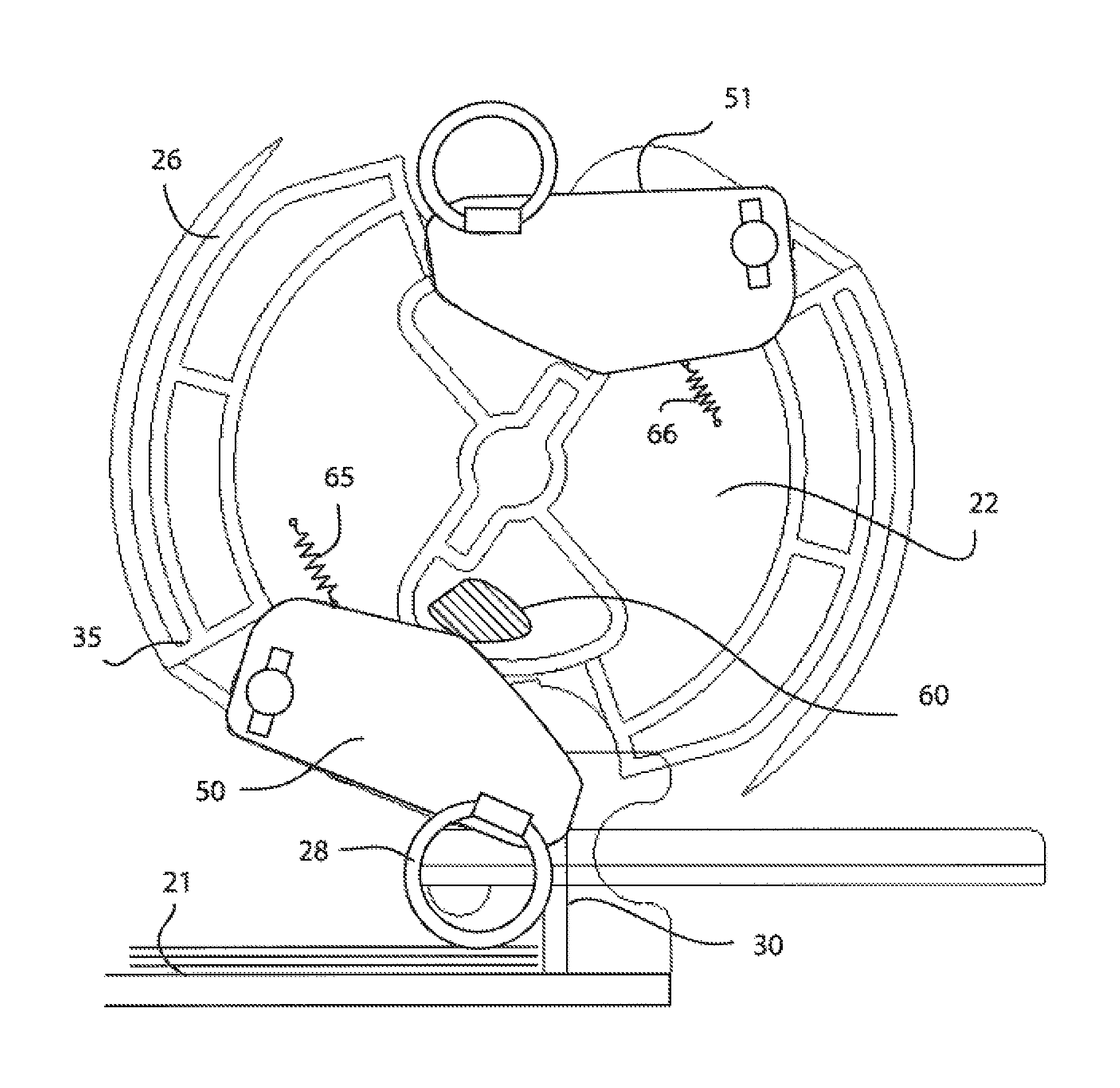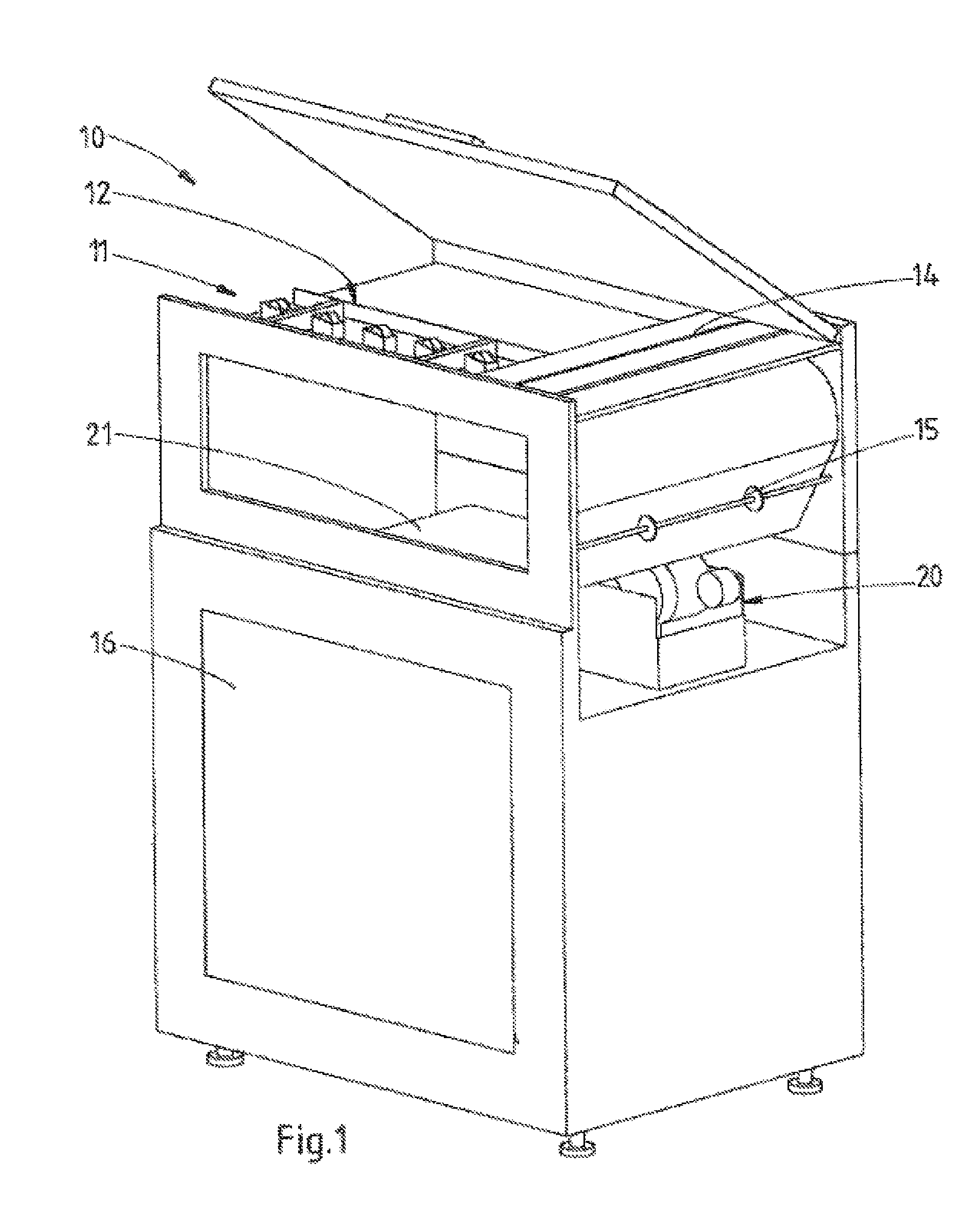Sheet stacking device
a stacking device and stacking technology, applied in the direction of pile receivers, thin material handling, article delivery, etc., can solve the problems of high undesirable deviations in the orientation of sheets relative to one another and relative to the reference plane, insufficient precision in producing accurately formed stacks, etc., to achieve accurate stacked results
- Summary
- Abstract
- Description
- Claims
- Application Information
AI Technical Summary
Benefits of technology
Problems solved by technology
Method used
Image
Examples
Embodiment Construction
[0022]The present invention will now be described with reference to the accompanying drawings, wherein the same or similar elements are identified with the same reference numerals throughout the several views.
[0023]FIG. 1 is a diagram showing a stacking device 10 in which a device according to the present invention has been mounted. A stacking device 10 of this kind may, for example, be mounted behind a printer. By coupling a printer's sheet outlet to the entry point of a stacking device 10 of this kind, sheets from the printer may be stacked neatly when the registration actions are performed by stacking device 10. A stacking device 10 of this kind may be embodied with various output facilities, such as, but not limited to, a pallet output facility for feeding stacks easily from the stacking device onto a pallet, a binding facility for binding the stacks together, for example using a plastic strip or another method, in order to maintain the stack shape also during transport.
[0024]St...
PUM
| Property | Measurement | Unit |
|---|---|---|
| frictional force | aaaaa | aaaaa |
| movement | aaaaa | aaaaa |
| friction | aaaaa | aaaaa |
Abstract
Description
Claims
Application Information
 Login to View More
Login to View More - R&D
- Intellectual Property
- Life Sciences
- Materials
- Tech Scout
- Unparalleled Data Quality
- Higher Quality Content
- 60% Fewer Hallucinations
Browse by: Latest US Patents, China's latest patents, Technical Efficacy Thesaurus, Application Domain, Technology Topic, Popular Technical Reports.
© 2025 PatSnap. All rights reserved.Legal|Privacy policy|Modern Slavery Act Transparency Statement|Sitemap|About US| Contact US: help@patsnap.com



